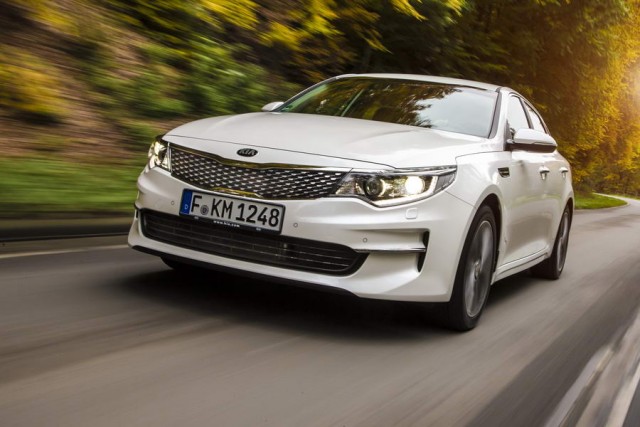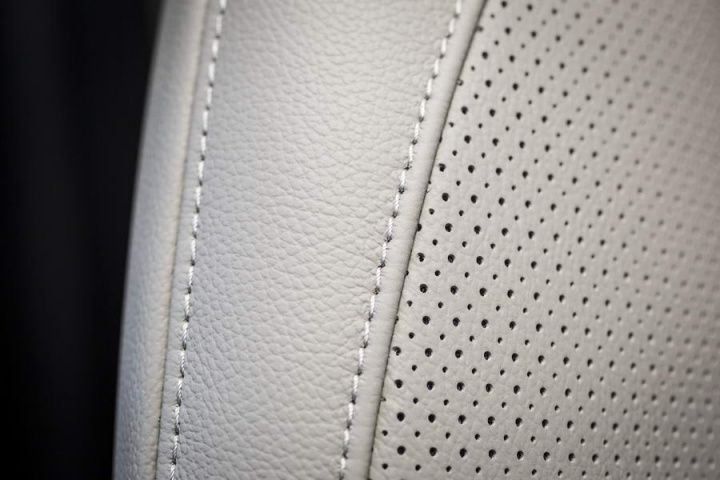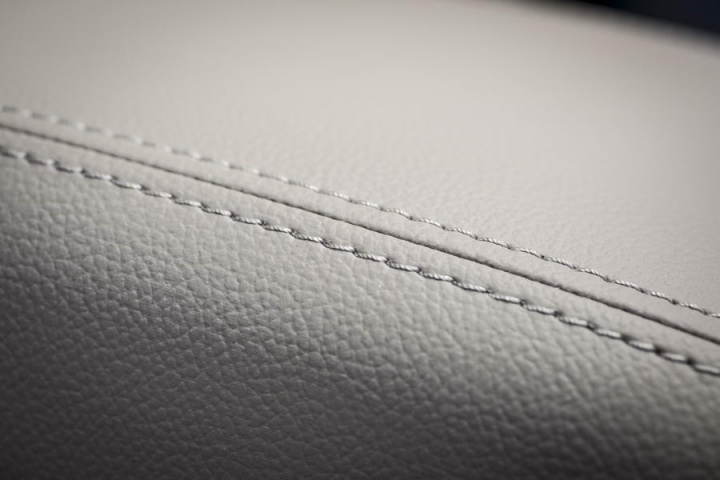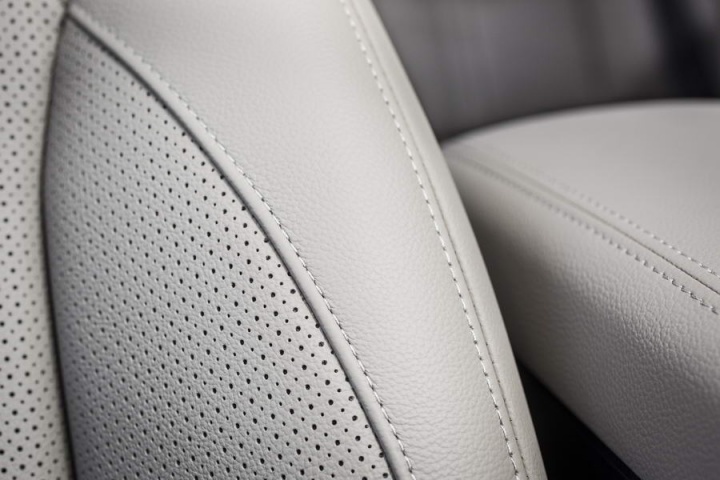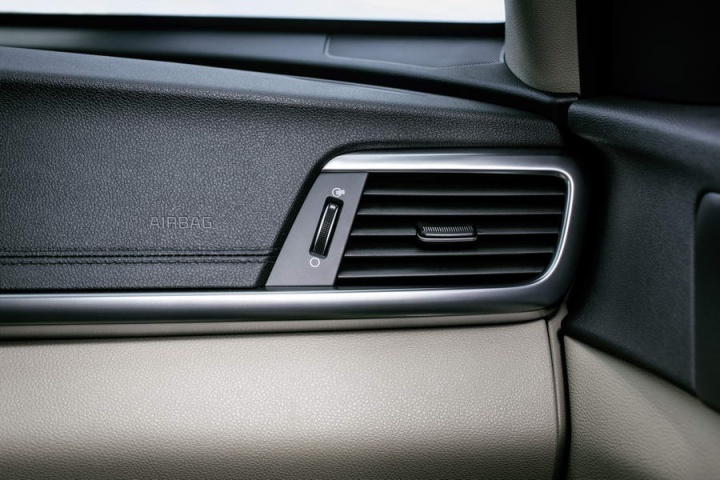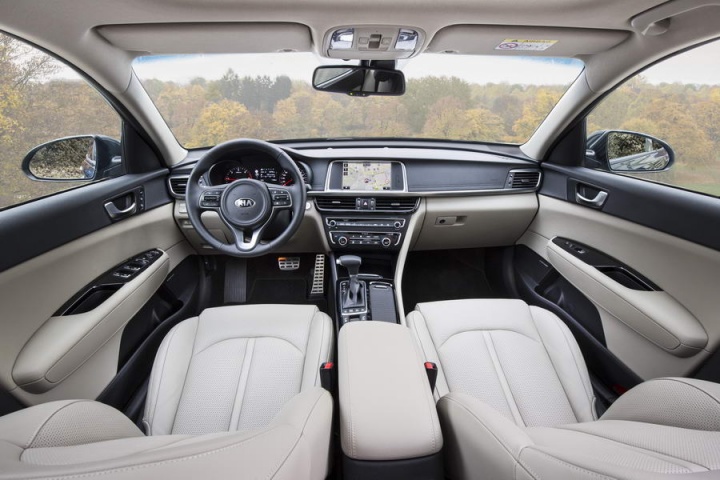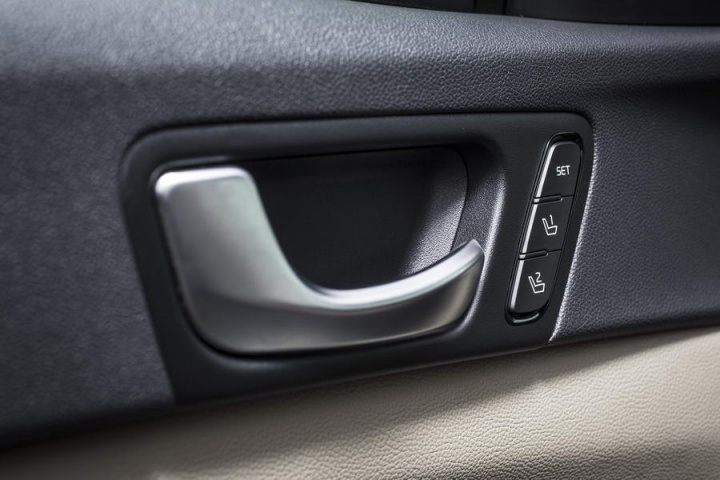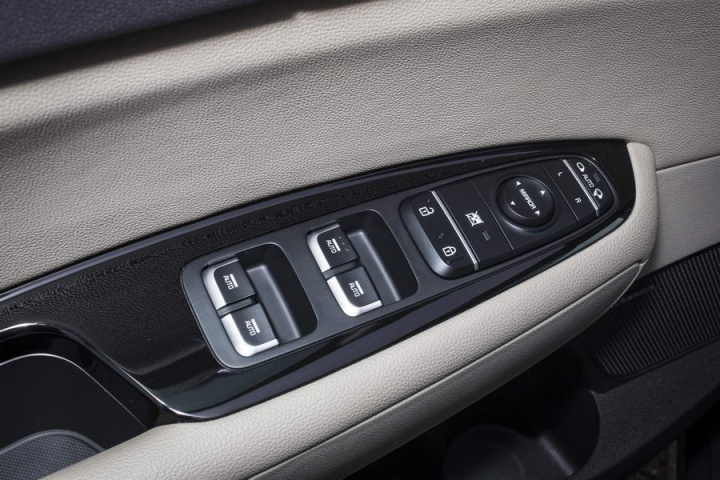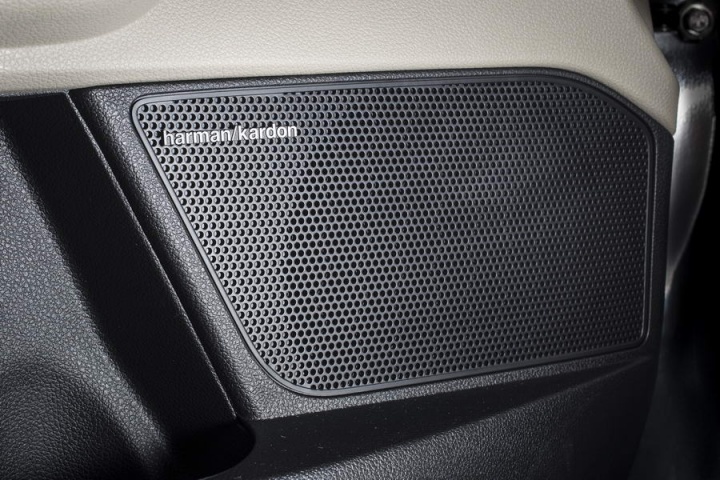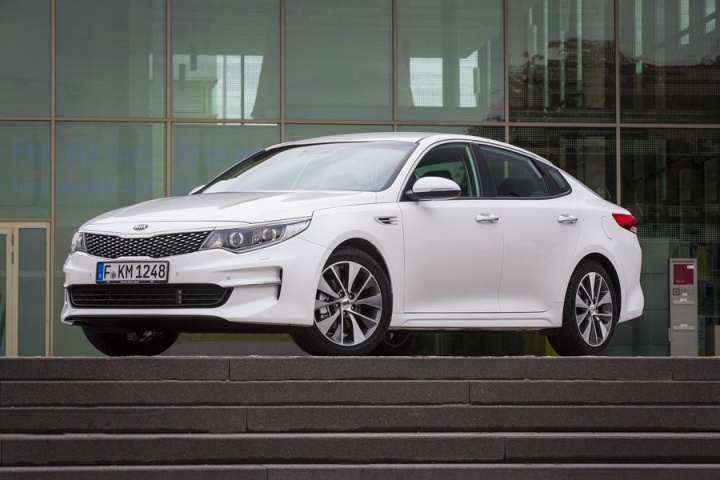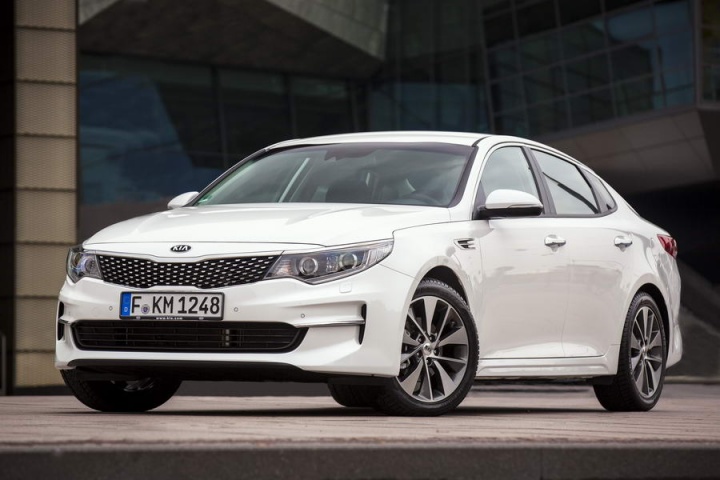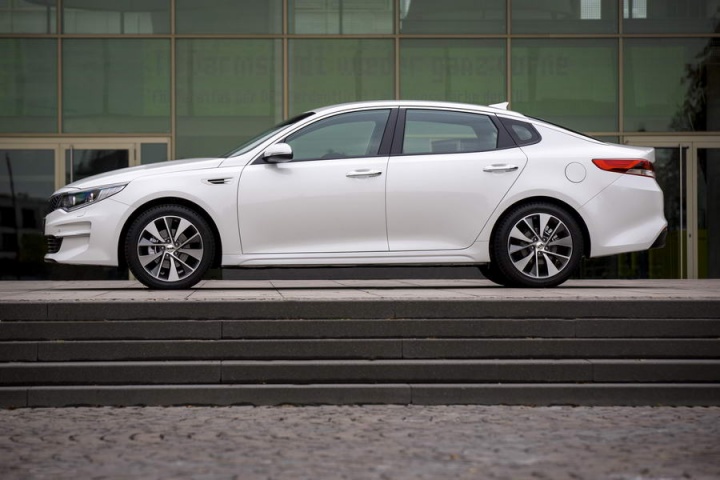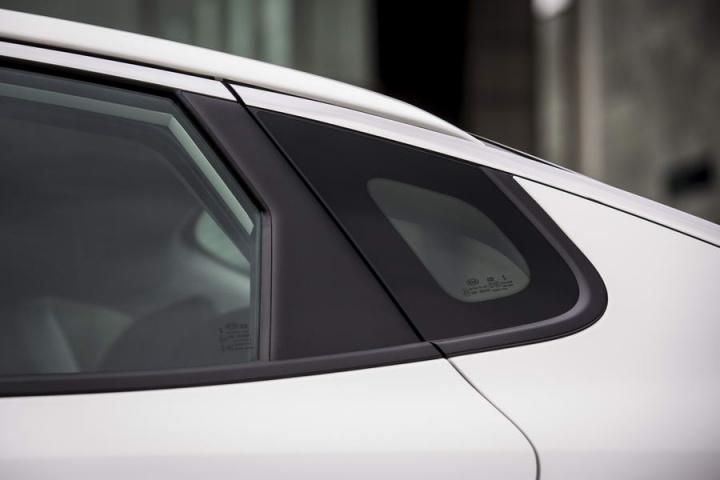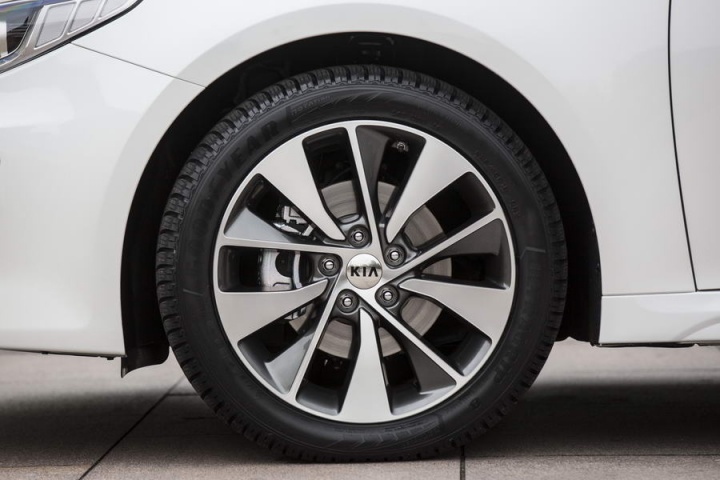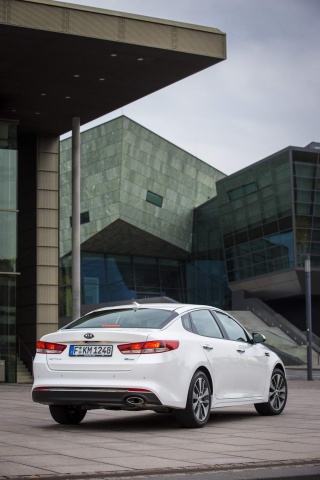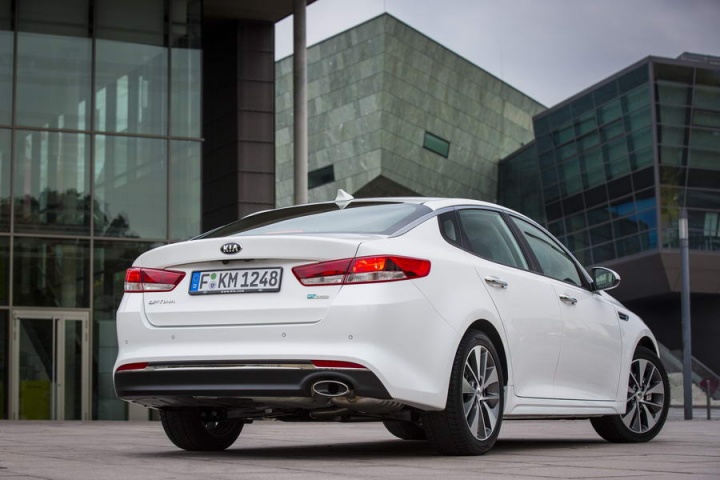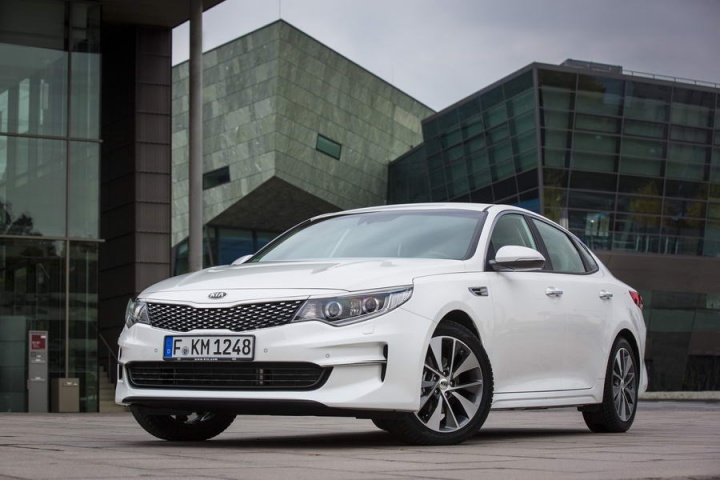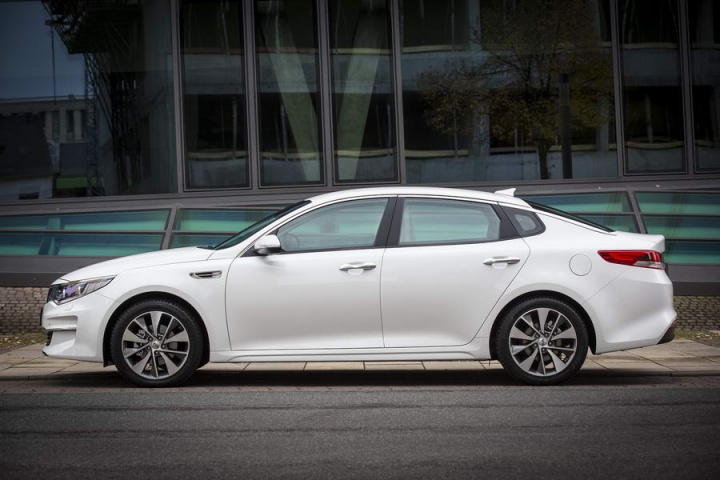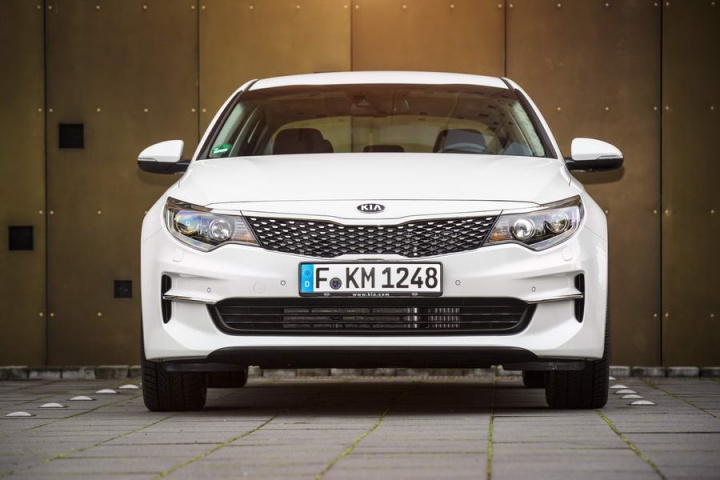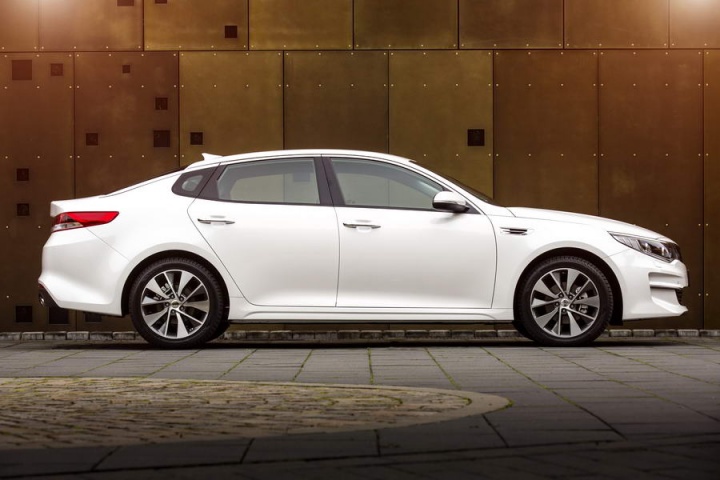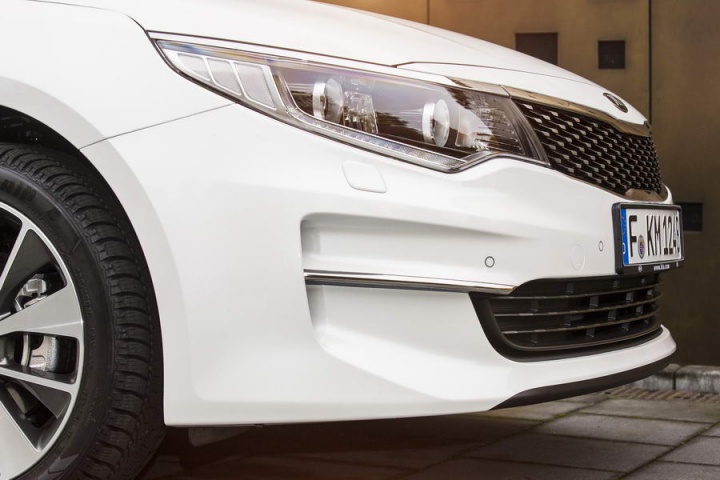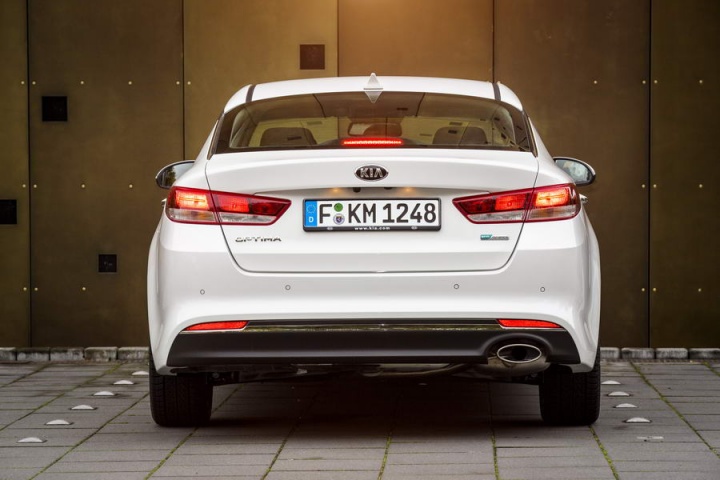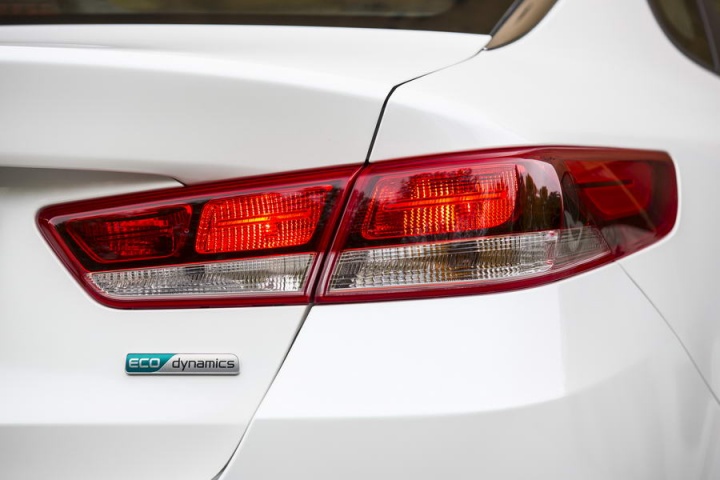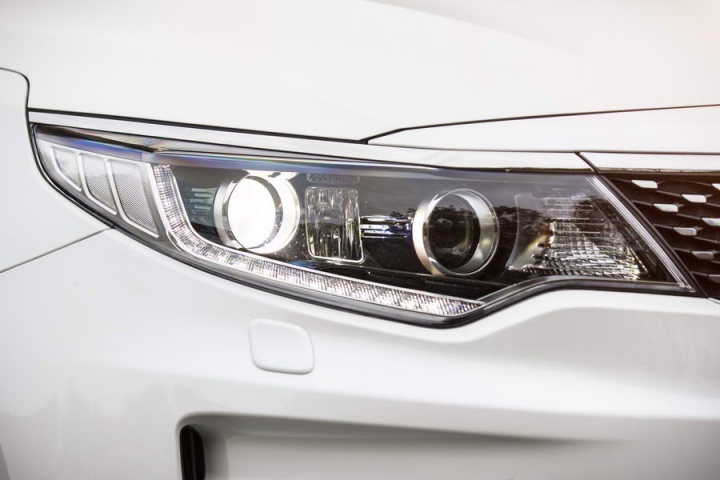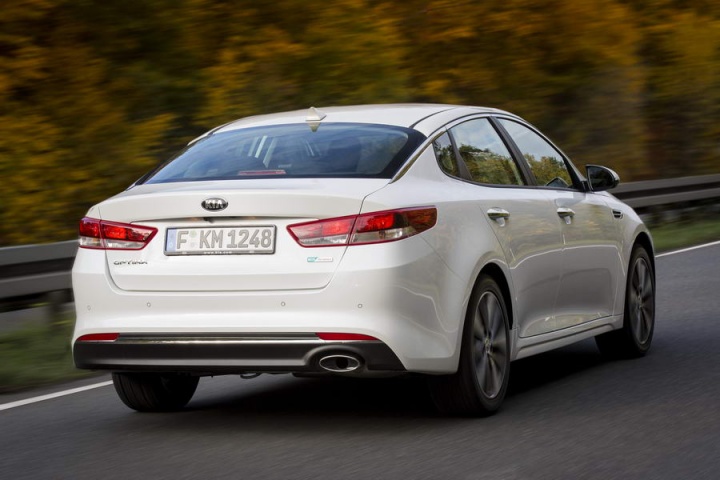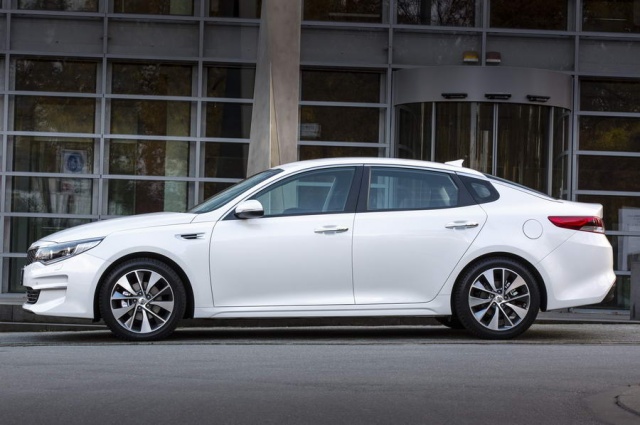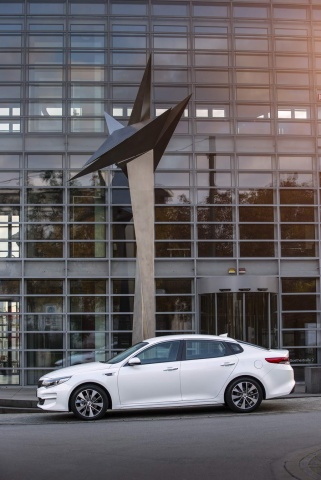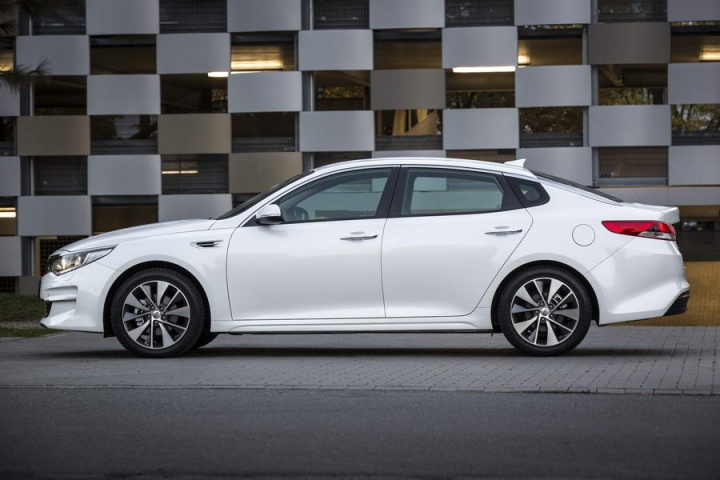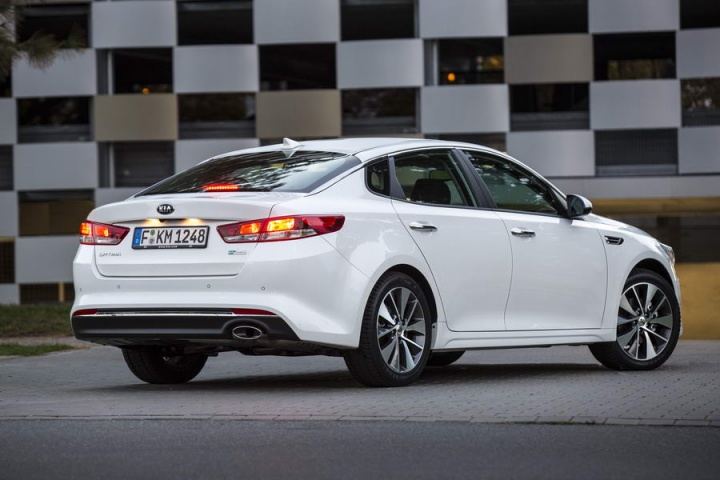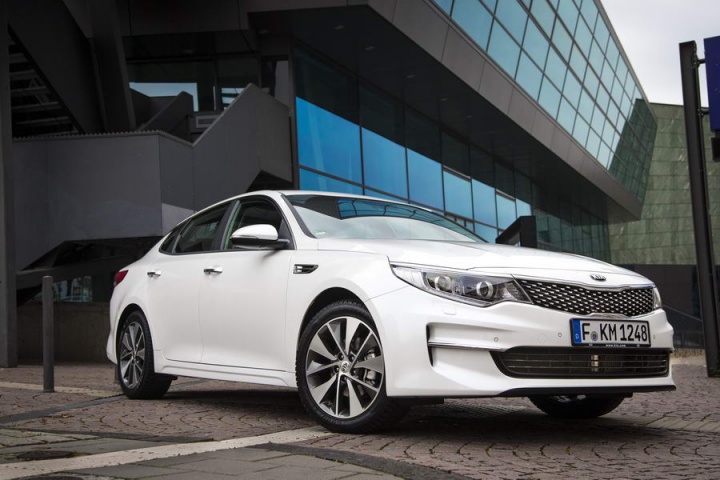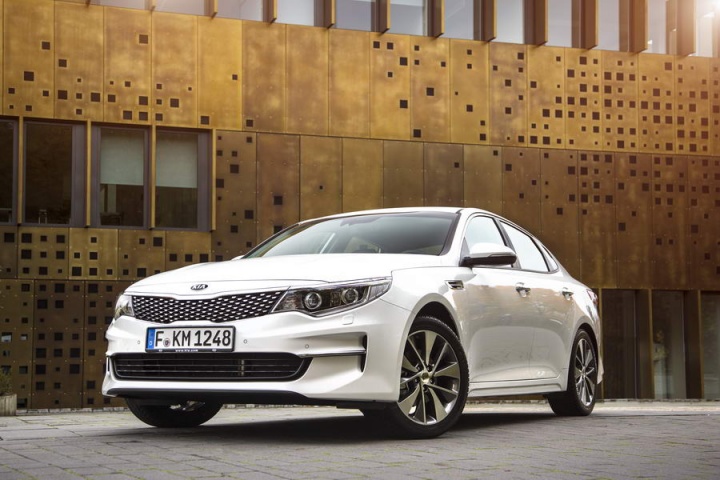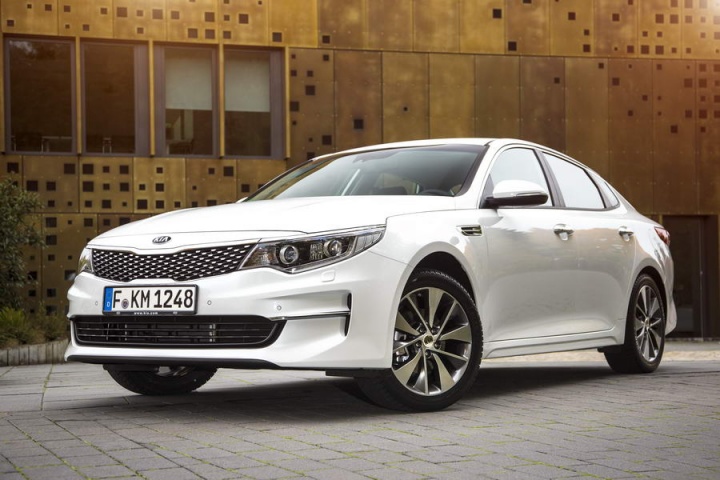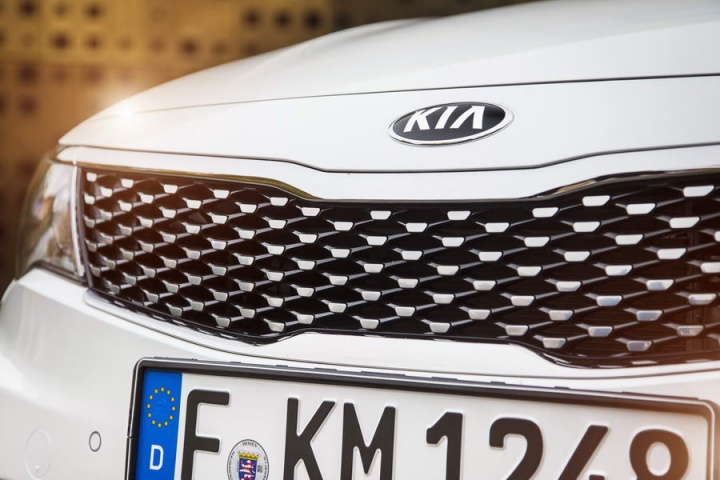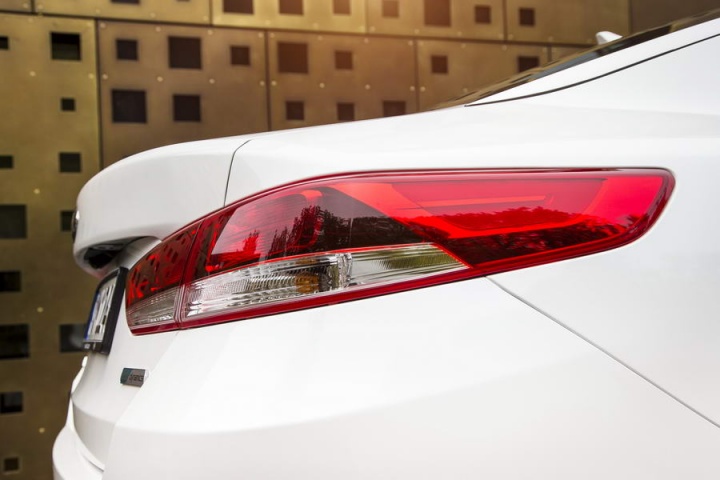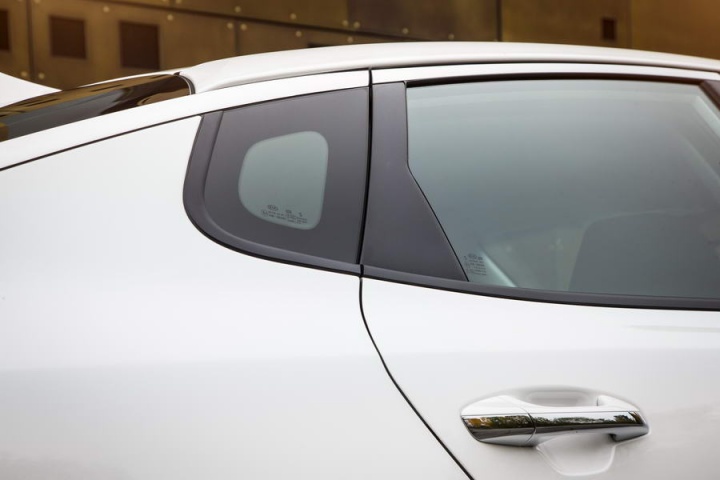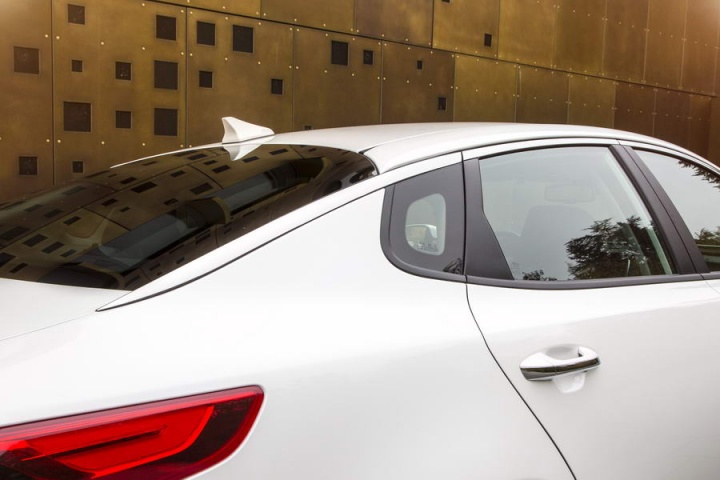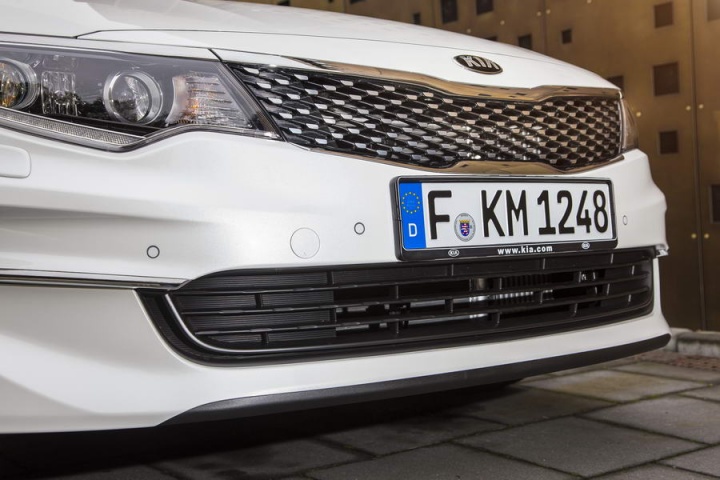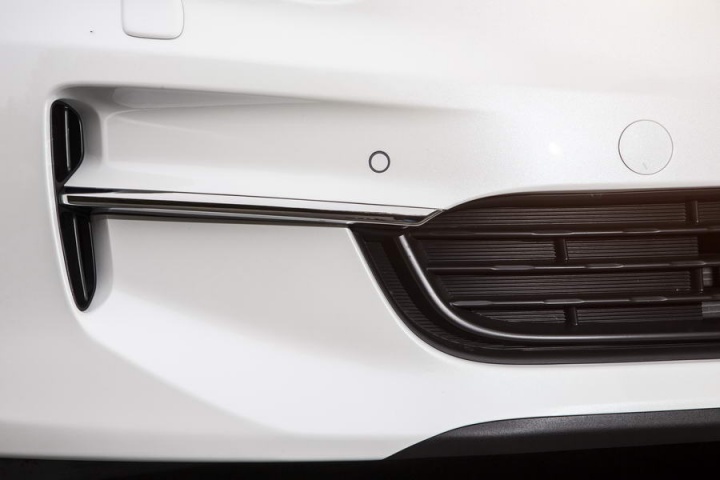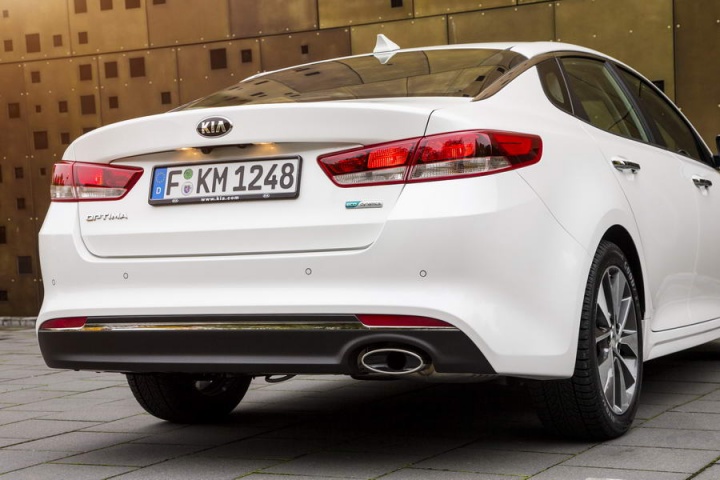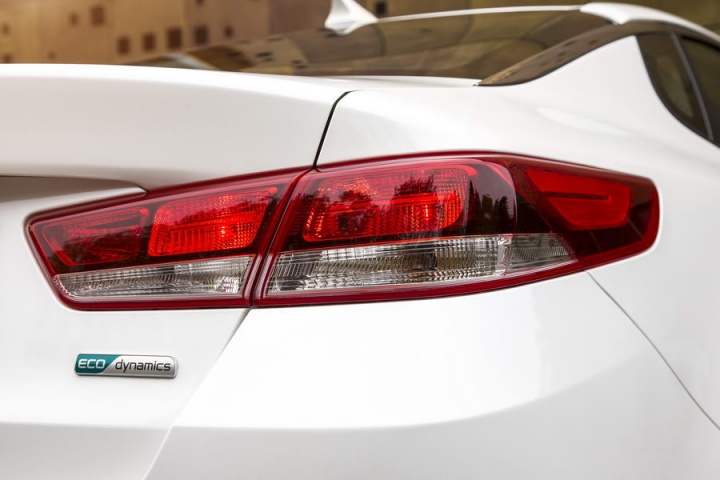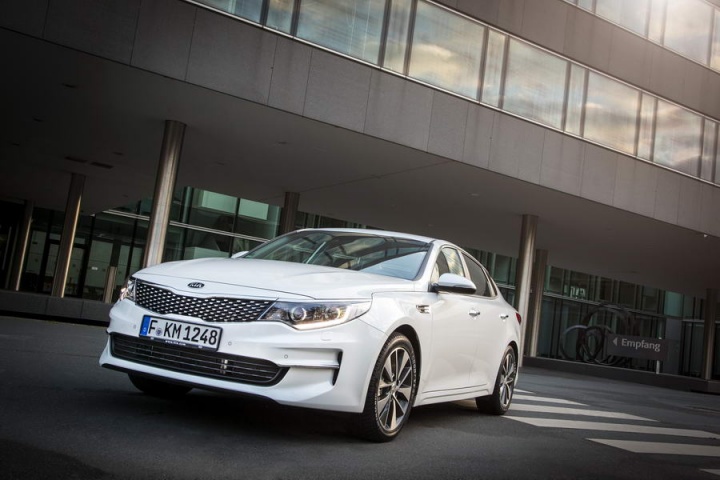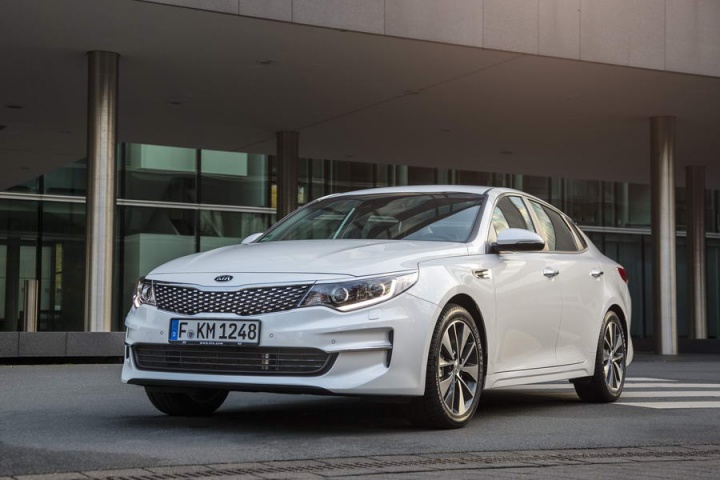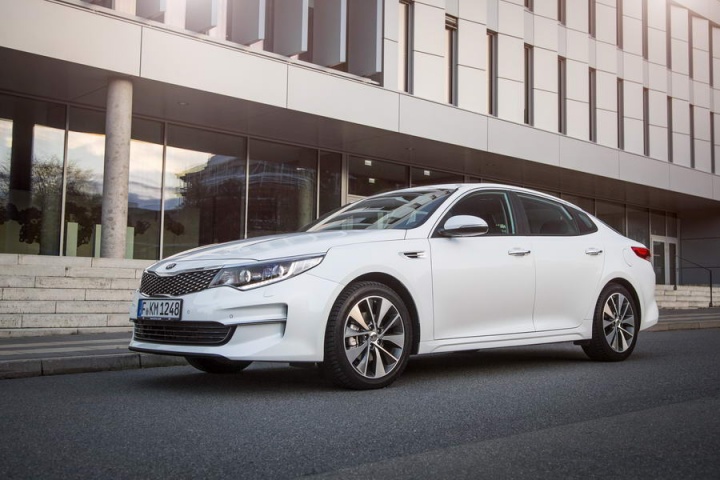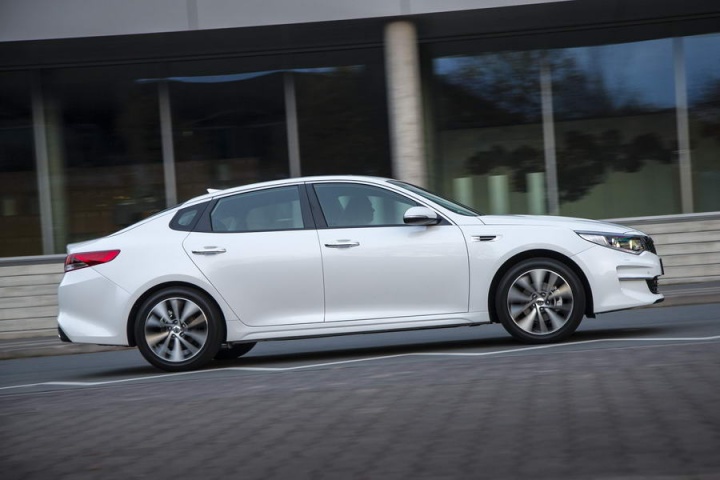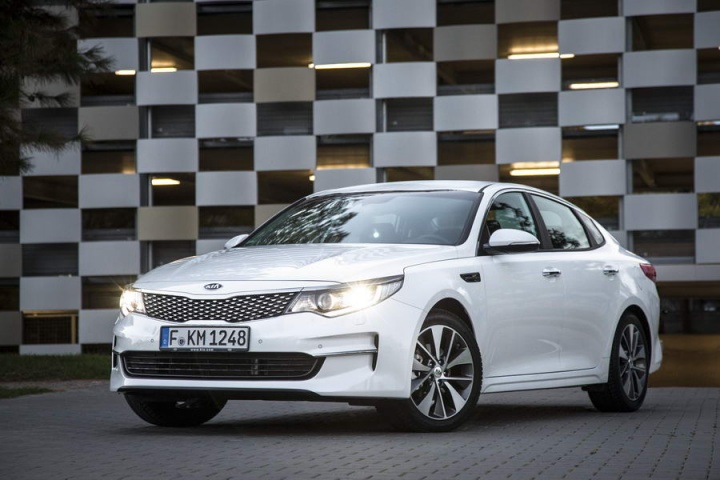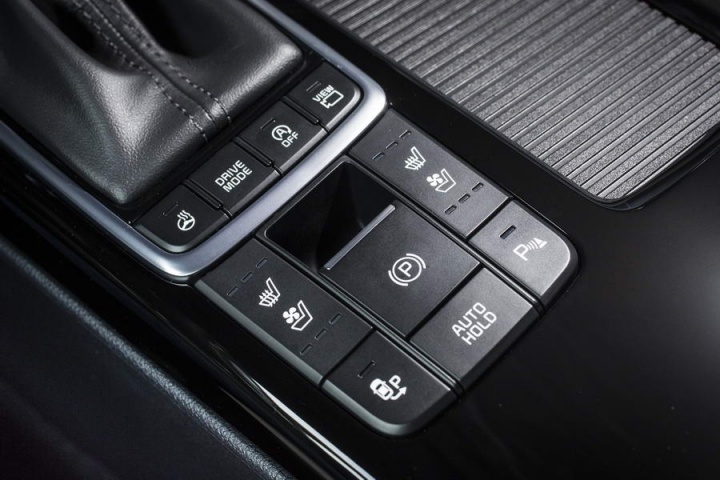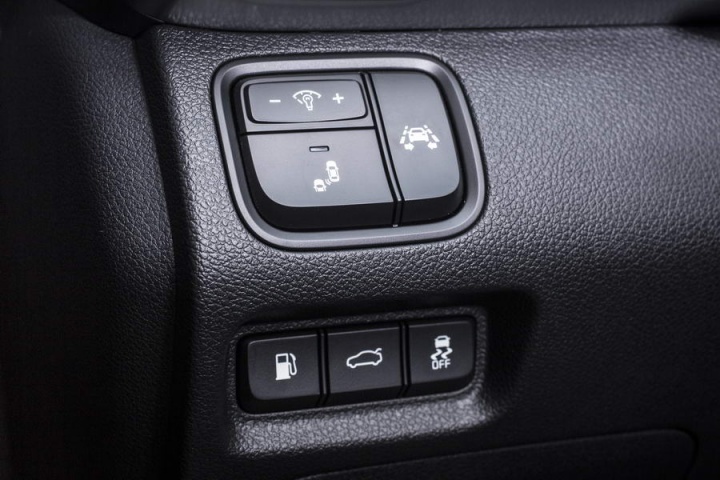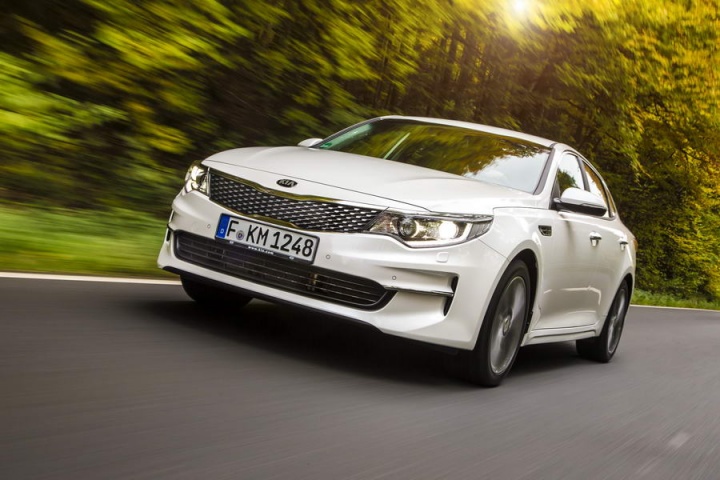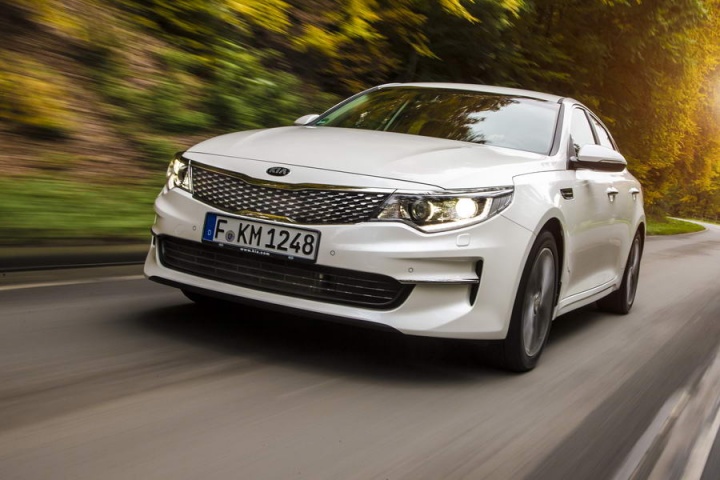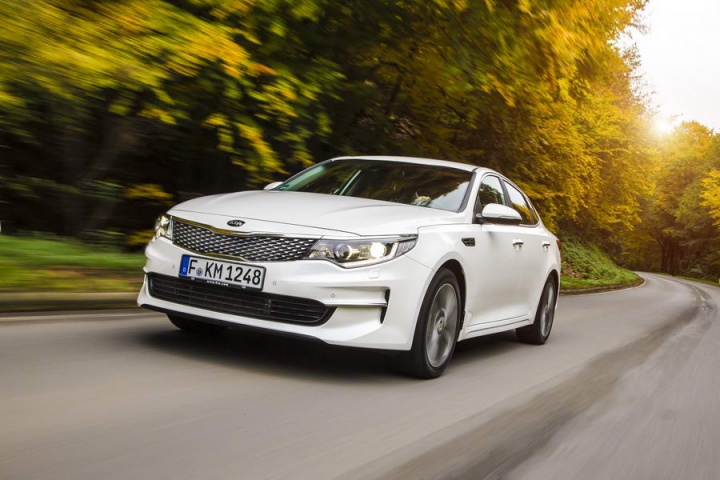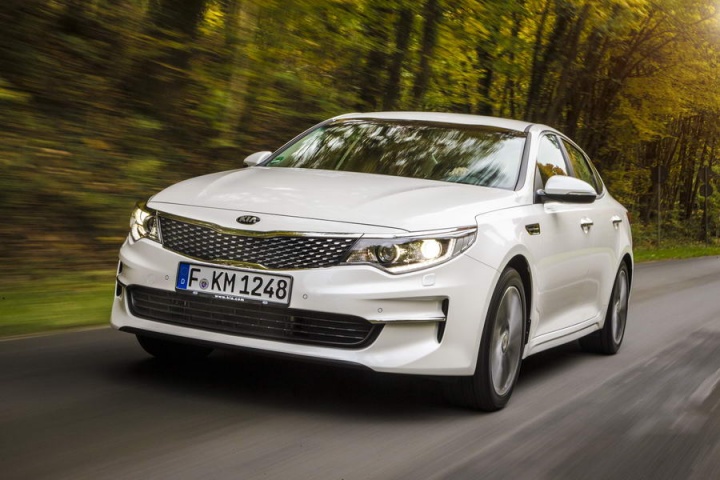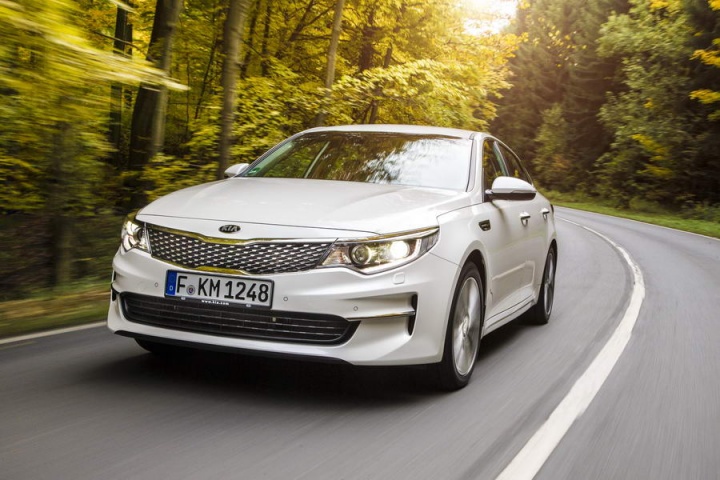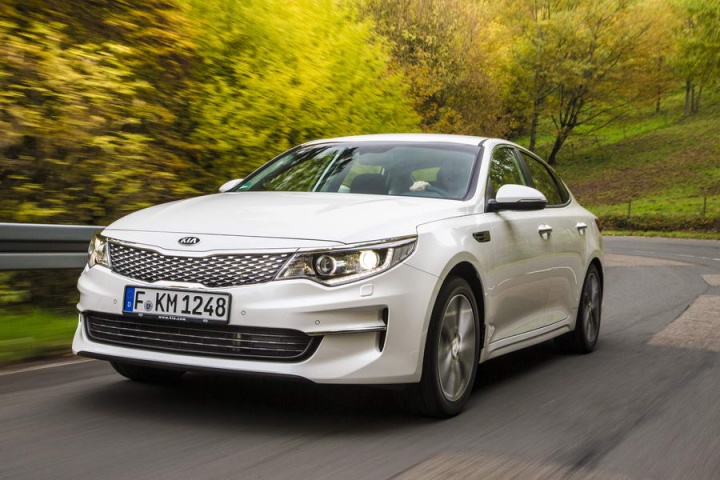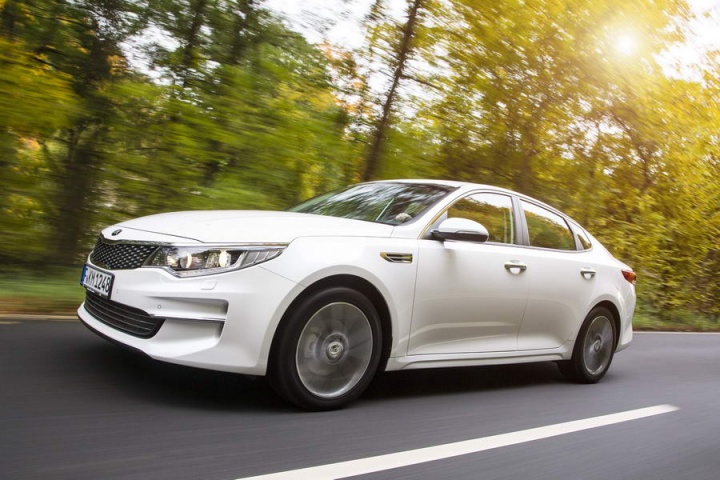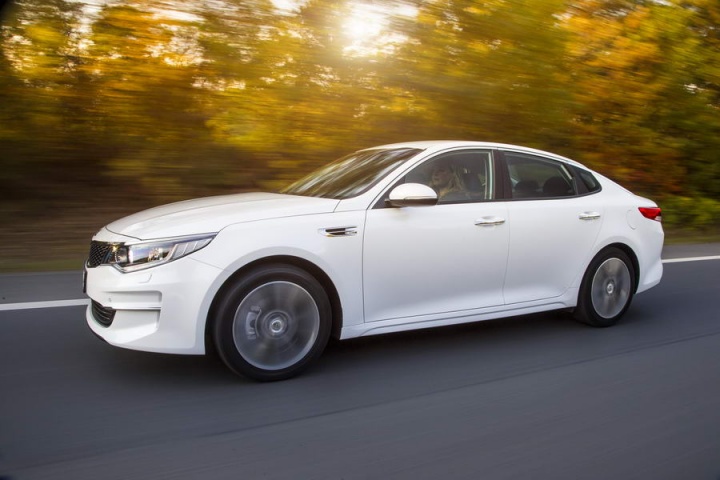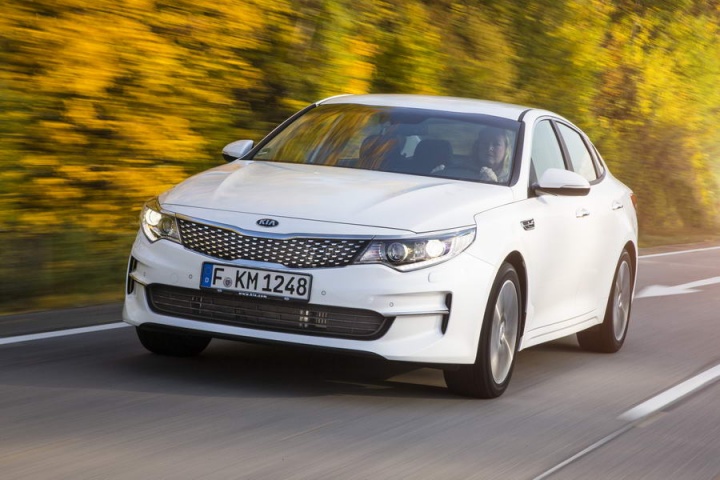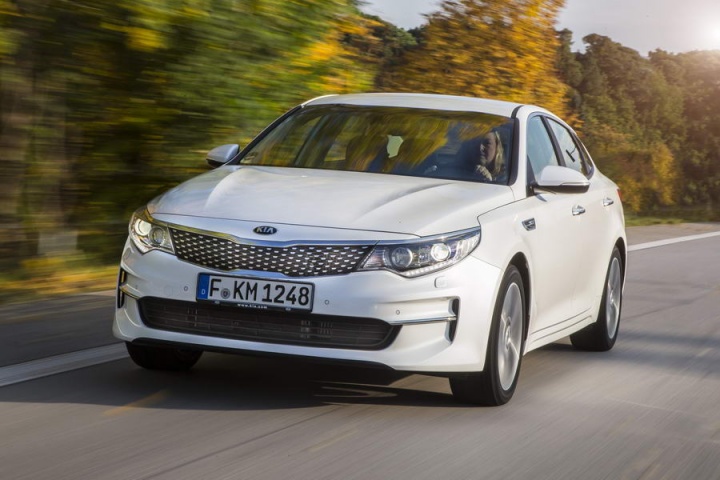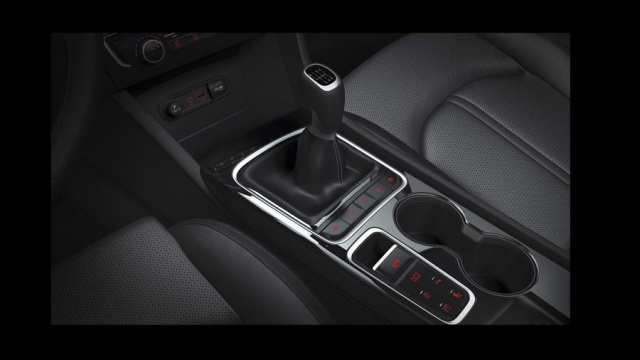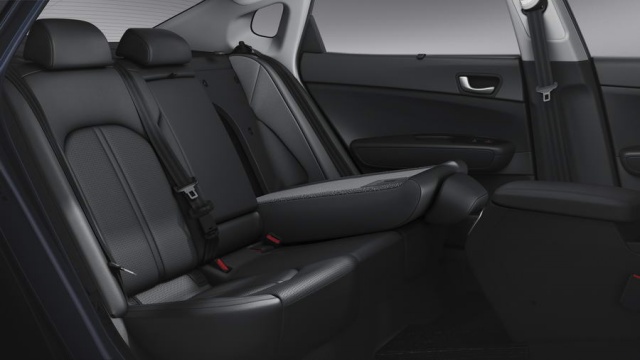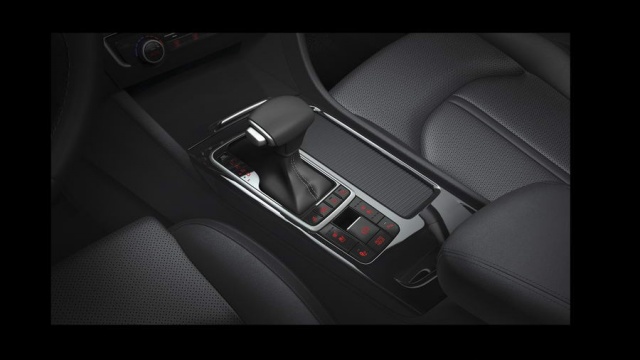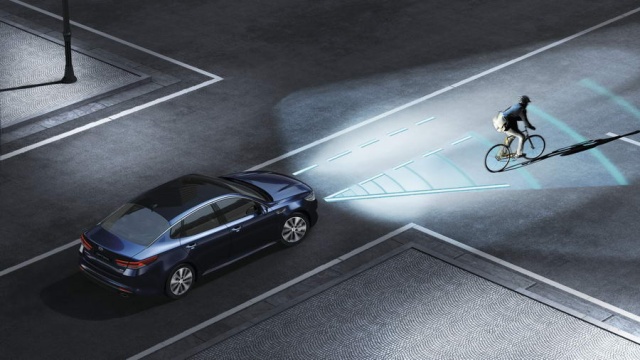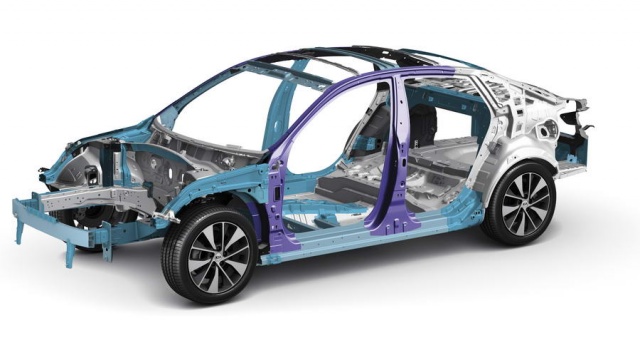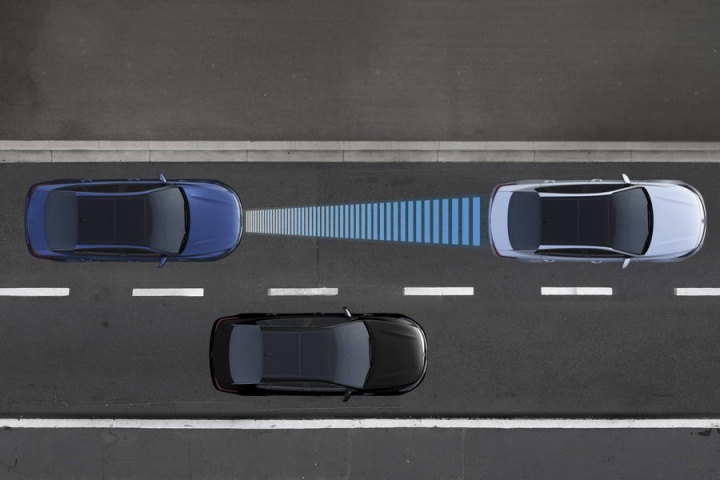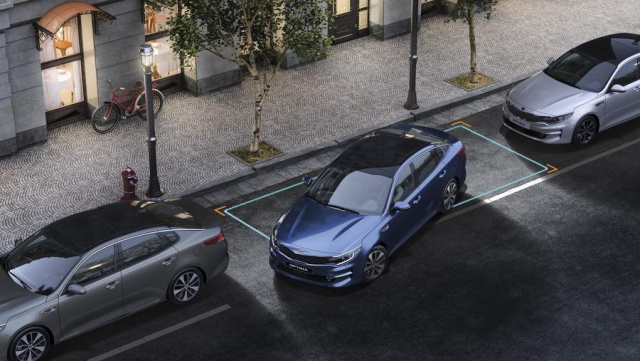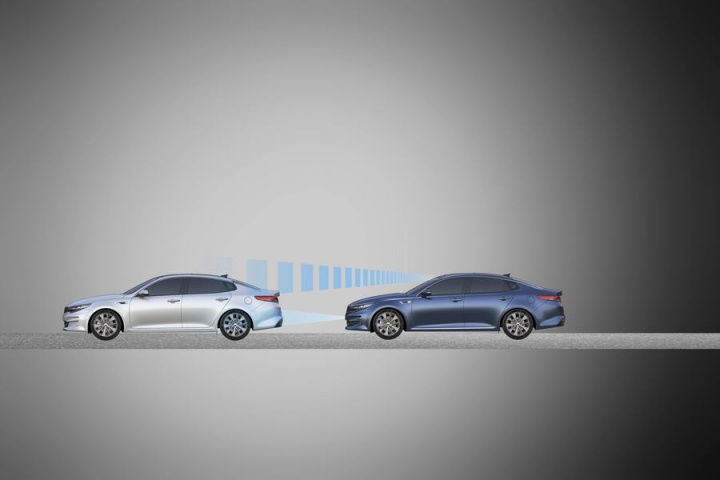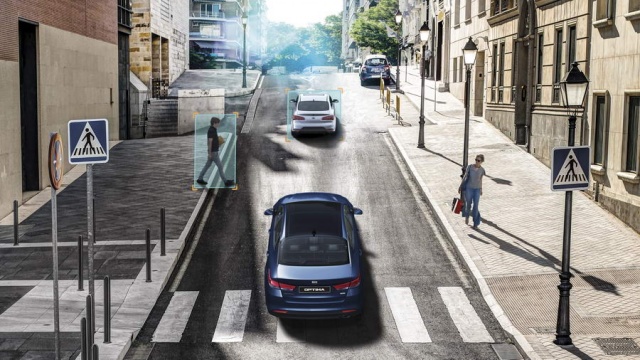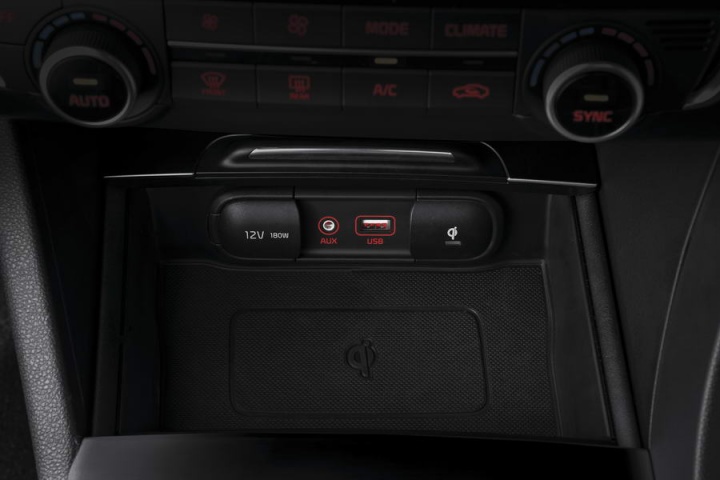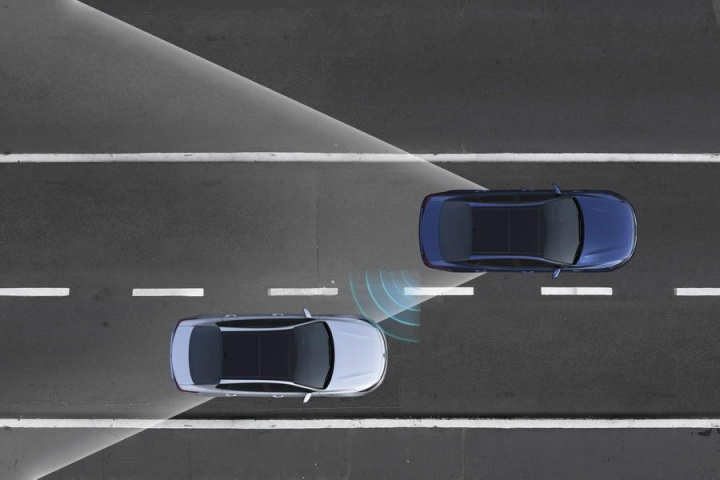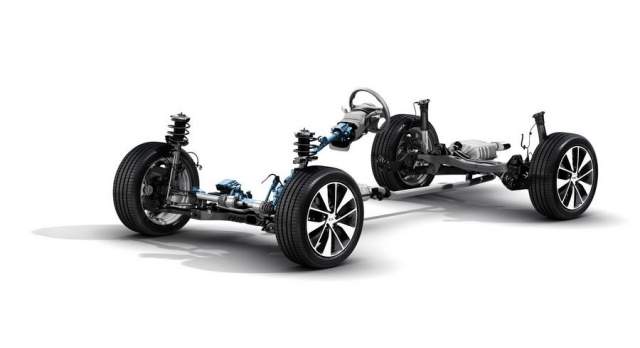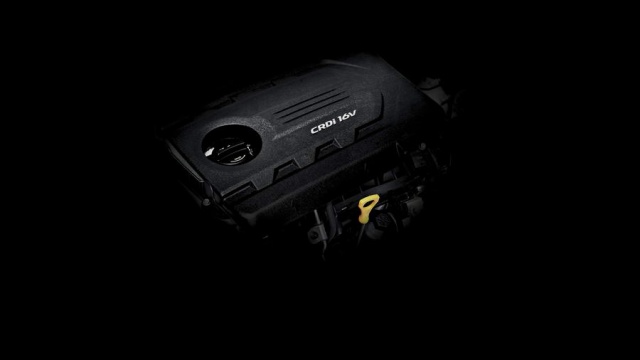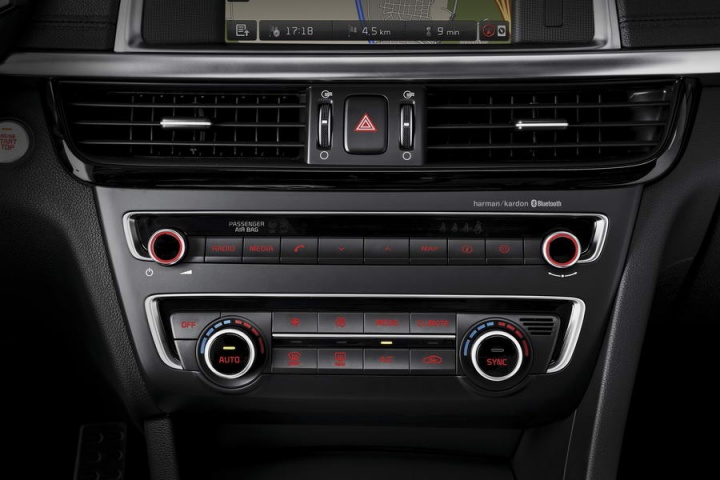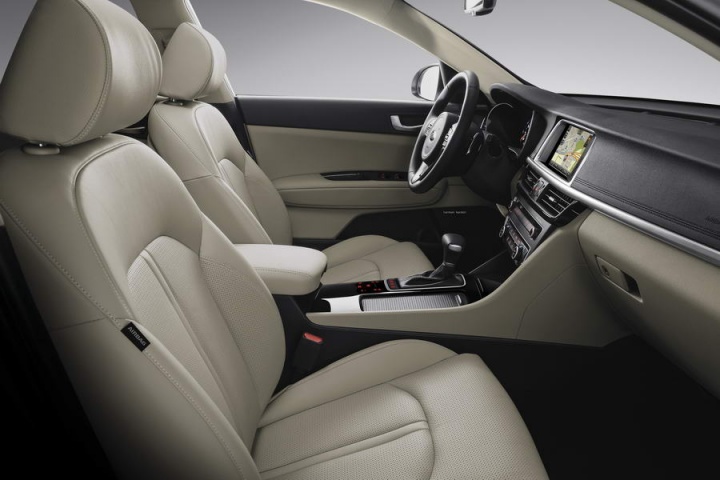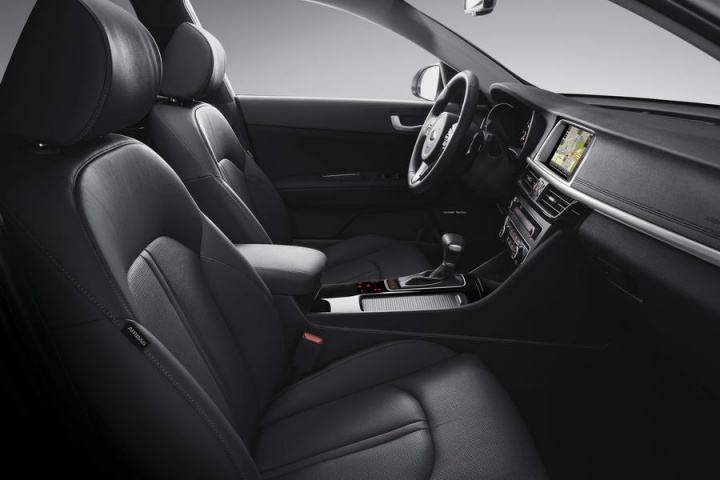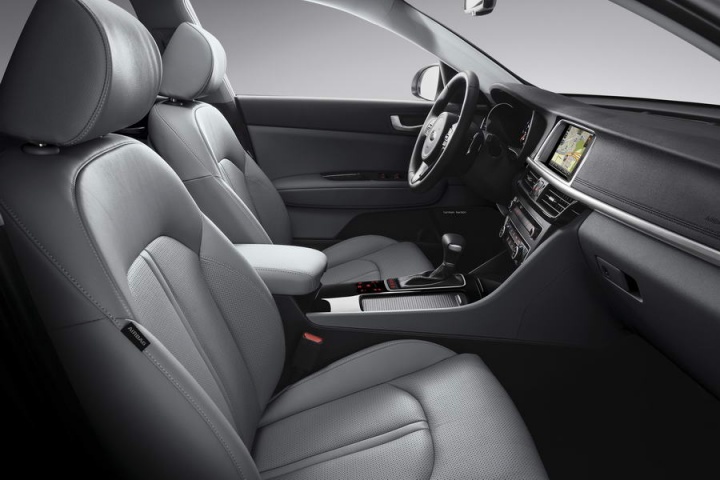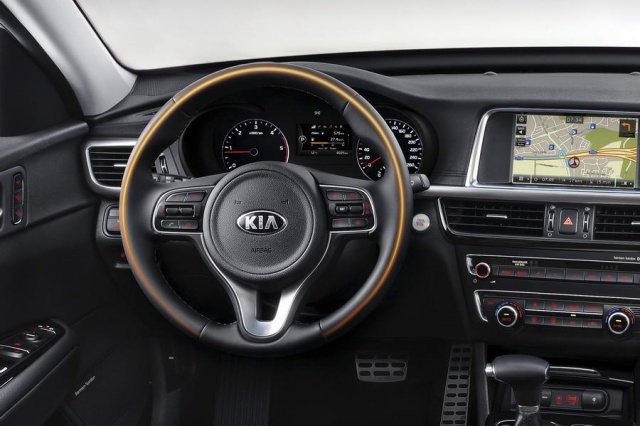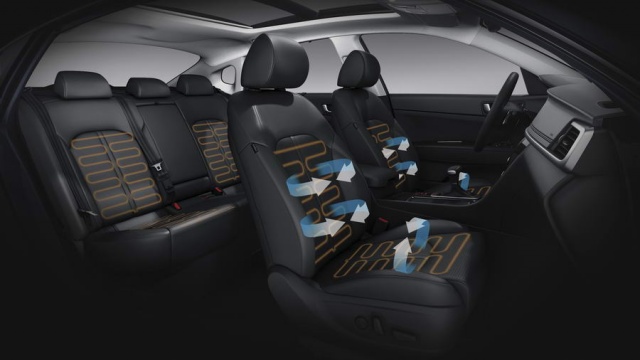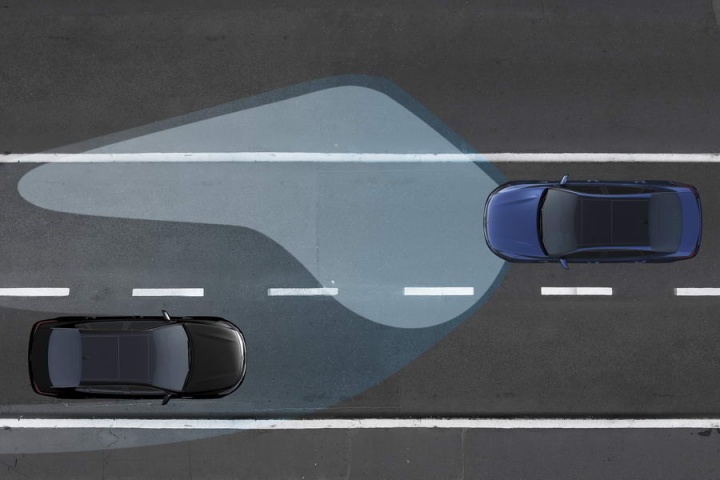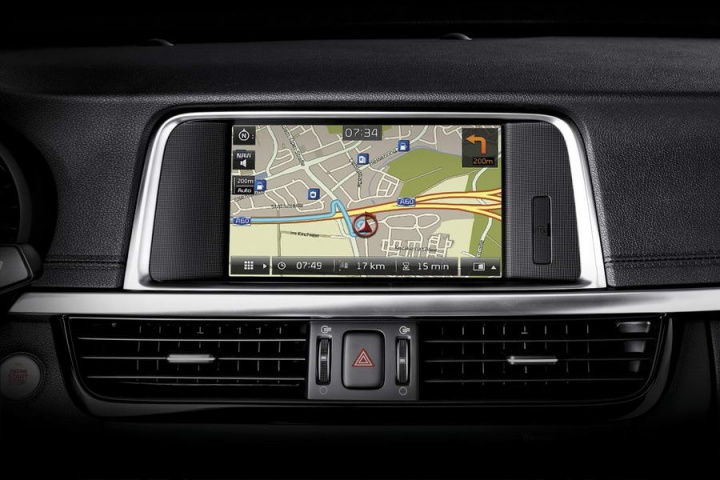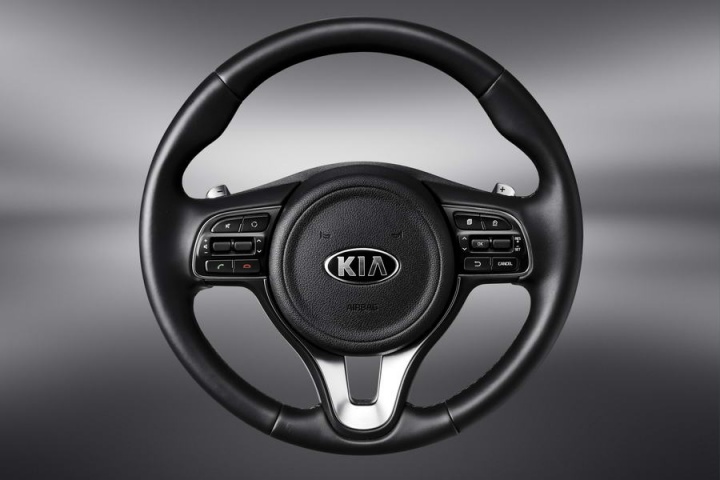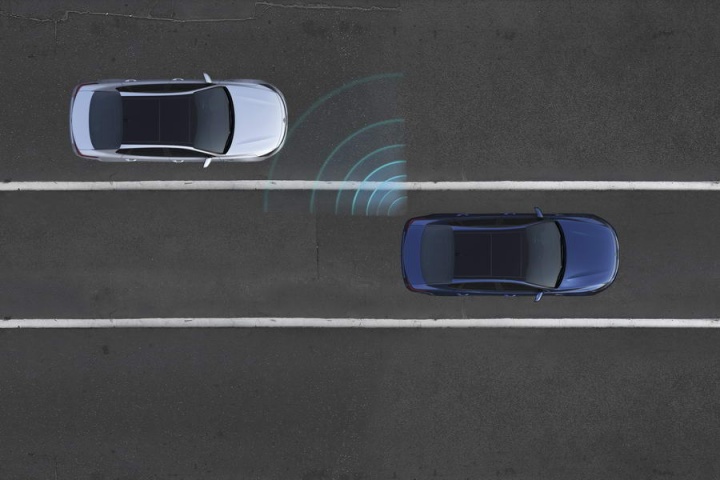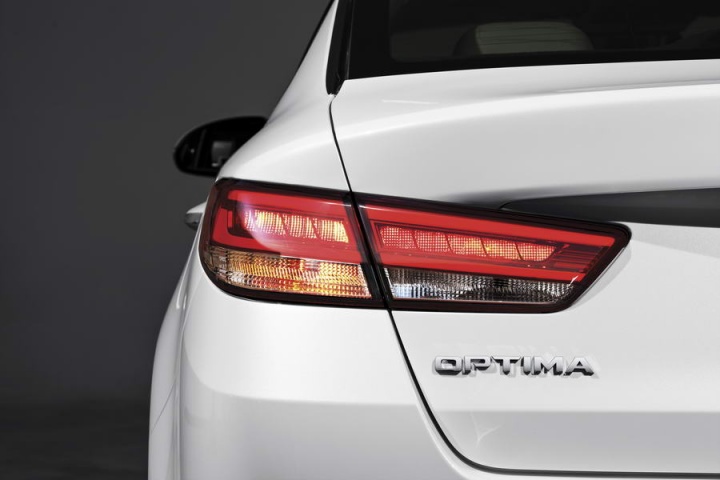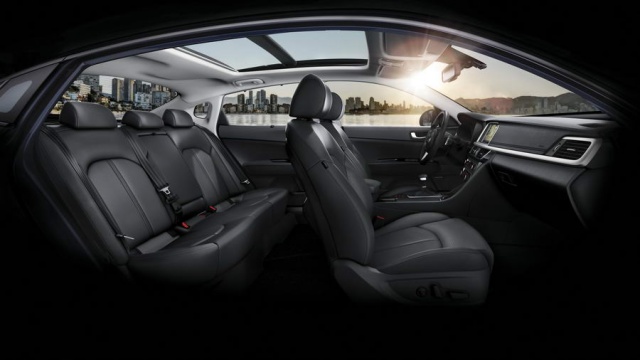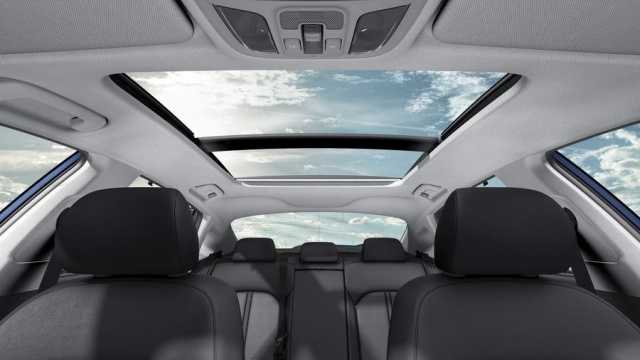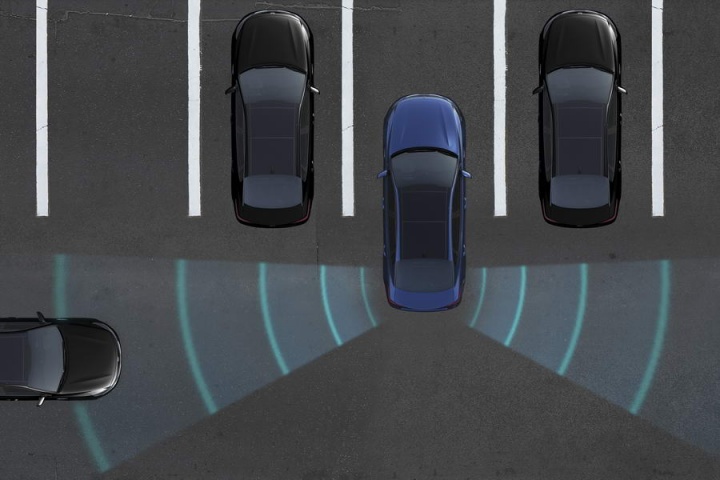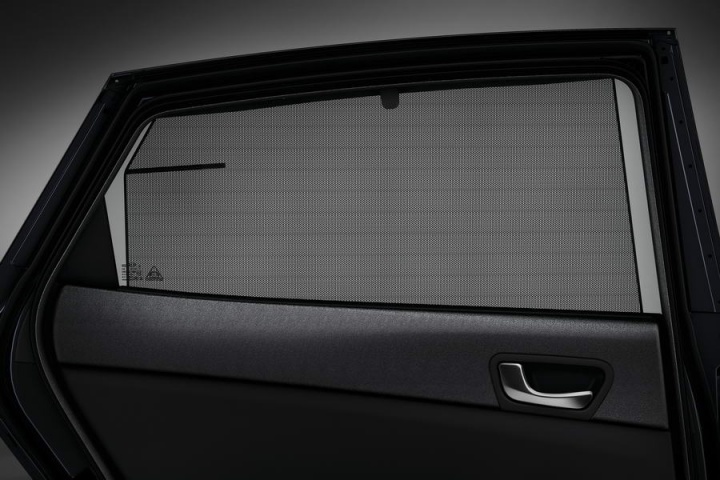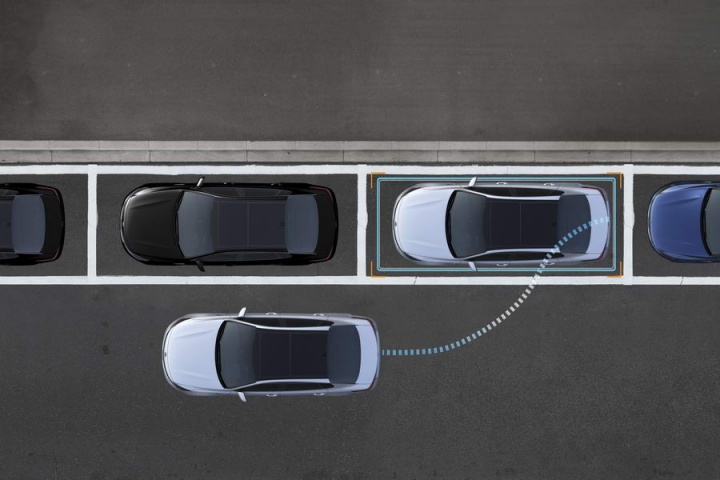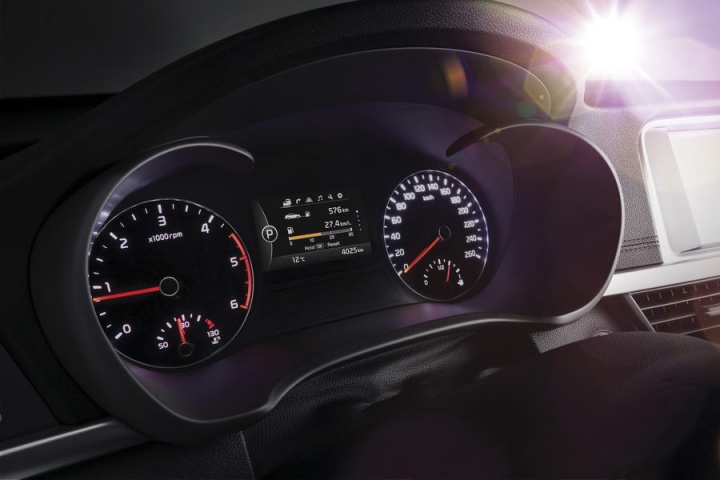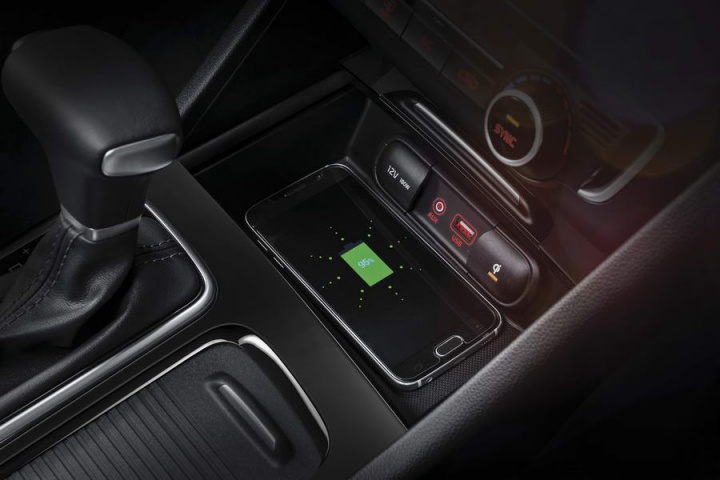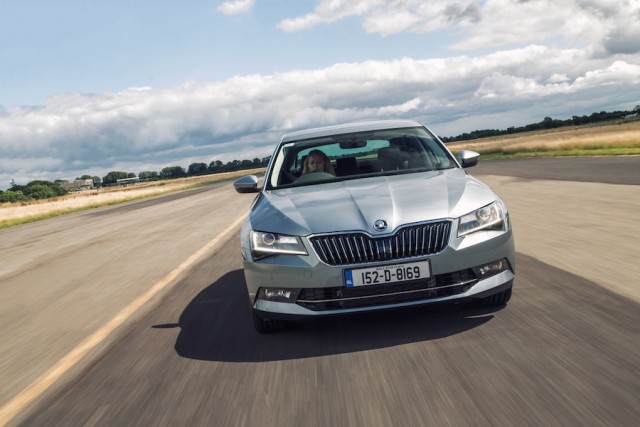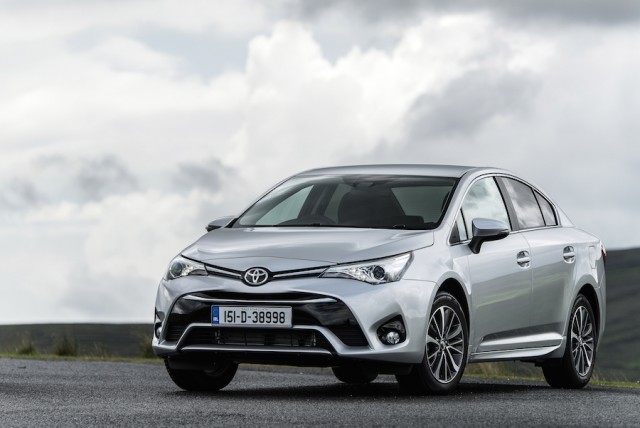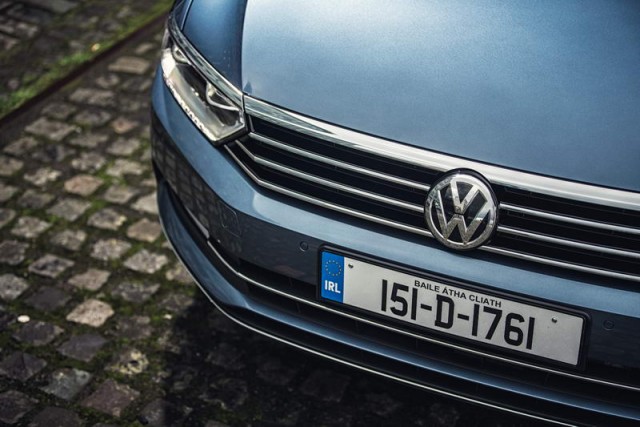Having achieved success with the cee'd and Sportage models, it is now the turn of the Kia Optima saloon to receive an extensive makeover. It goes much deeper than the sheet metal in a bid to further rival its European D-segment competition.
In the metal
This reworked Kia Optima is a noticeably improved overall design in comparison with its predecessor. Many aspects have been softened, most noticeably around the nose of the car, which now benefits from a headlight and grille setup that's far better blended in its appearance. There's even a hint of Volkswagen Passat about it thanks to the chrome strip running across the grille and headlights.
Unlike the 2016 Kia cee'd and Sportage the Optima does away with the 'ice cube' LED daytime running lights in the lower bumper corners. In their place is a bisected 'air curtain' intake that is as stylish as it is functional. It channels air through the bumper the wheel arches to help reduce aerodynamic drag.
Only minor changes have been made along the flanks of the Optima, mainly around the doors and windows in order to reduce wind noise. The C-pillar at the rear door now incorporates a small window and when viewed square on this rises up to meet the end of the roof line. It is only a minor detail but it resolves one aspect of design that never quite looked right on the previous model. At the back there is now a much sharper look and although the tail lights still wrap around from the rear wing they do now look sleeker.
Boot space has grown slightly to 510 litres and whilst its aperture is on a par with most of its competition the boot lid does feel very light when opening and closing, which some may like but others may feel a touch on the cheap side.
Where you will notice the biggest changes is inside the cabin, where you are greeted by a fresh new dashboard layout and design, and one that is more in line with that of the Kia Sorento. Not only is it angled slightly towards the driver, all models will come equipped with a seven-inch colour touchscreen mounted in the upper display zone of the dashboard. Below this are primary controls for the ventilation, radio and satellite navigation.
Kia has paid close attention to customer feedback, in particular to what those in Europe want, and so the materials used throughout the cabin have a higher quality and finish. There's less hard, scratchy plastic while the haptic feedback of the buttons also feels better. It isn't quite rivalling Volkswagen and Skoda, but it is certainly on a par with the likes of Toyota and Peugeot. There's good news for passengers in the rear too, with legroom growing by 25mm and headroom by 15mm, which come in part thanks to the 10mm stretch in the new Optima's wheelbase.
Driving it
From the moment you sit into the now more supportive seats, pull the door shut and start the engine, it is clearly evident that Kia has been working hard to improve quality. Even when started from cold and in the confines of town that revised 1.7-litre turbocharged diesel engine is noticeably muted in comparison to the previous generation Optima. Increased amounts of sound deadening material around the bulkhead contribute to this, while other features such as new mouldings around the windscreen serve to reduce wind noise.
A slight increase in power, from 136- to 141hp, has been achieved through changes to the electric actuator on the turbocharger, as well as low friction coatings on the pistons and increased injector pressure, which now operate at 2,000 bar. The result is an engine that pulls well, with its peak torque now delivered 250rpm earlier, at 1,750rpm.
The spread of gears across the manual six-speed transmission seems to suit the car well, presenting it with little issue in pulling the car along from very low engine speeds in second or even third gear. There is less of a need now to drop it down one gear than before.
Perhaps the bigger news here is the fact that Kia has also introduced a new seven-speed dual-clutch automatic transmission that has significantly lower emissions over the previous six-speed automatic. That old unit used to languish at the wrong end of the motor tax scale, but this new unit comes in under Band A4 - just one higher than the manual.
Also coming in for revision is the power steering. Kia has decided for efficiency's sake to move to a rack-mounted power steering system rather than its usual column-mounted setup. This enables Kia to use a more energy efficient electric motor. Despite claims from Kia's engineers there doesn't seem to be any real discernible difference in steering feel. It remains that bit too light and without any real feeling of connectivity with the front axle. Most owners won't really mind this but those who are more enthusiastic about their driving won't feel particularly enthralled.
Out of town and on faster flowing roads and motorways the Optima settles into a nice groove. It's one that is well damped and none too busy from a suspension perspective. The front suspension now has larger piston diameters for the dampers and new bushes, while the rear has been upgraded from a single to a dual lower arm setup. Not only does this all improve the function of the suspension it has also been designed to help suppress road noise. These changes certainly give the Optima a better ride; it's just a pity that the steering holds it back from being a better driver's car.
What you get for your money
There will be three distinct specification levels for the Optima, starting with EX, which will be priced from €27,950. For this, buyers get 17-inch alloy wheels, a seven-inch touchscreen with satellite navigation, lane keep assist, speed limit information on the 4.3-inch TFT dashboard display, dual-zone climate control, LED daytime running lights, cruise control, automatic wipers and headlights and electrically folding door mirrors. Add to that the company's seven-year warranty and it makes for a good value proposition.
The higher Platinum grade is priced from €31,450 and adds 18-inch alloy wheels, leather upholstery, electric adjustment for the driver's seat, heated front seats and steering wheel, rear LED lights and glossy door trim. It is also the only specification in which the automatic transmission is available, which is priced from €34,450. This model also features a wireless phone charging dock.
At the top of the pile is the GSE specification, which carries a starting price of €34,450 and gains a larger, eight-inch touchscreen display, aluminium pedals, automatic boot function, two-tone leather interior and an upgraded stereo system.
Summary
This new Kia Optima is the clearest indication yet that the European car makers no longer have it all their own way when it comes to refinement. It may not set new benchmarks but it is now a very competent competitor that deserves to be on more buyers' consideration lists than before.

